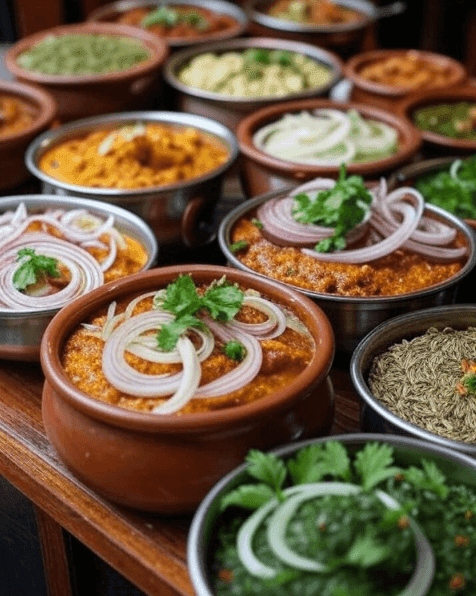
Understanding the Role of Aromatics in NJ Best Indian Restaurants
When you step into any of the NJ best Indian restaurants, the first thing that captivates your senses isn’t the sight of the food—it’s the aroma. The air is filled with an inviting blend of spices, herbs, and slow-cooked ingredients that create an unforgettable sensory experience. In Indian cuisine, aromatics are far more than simple flavor enhancers—they form the foundation of every dish. From sizzling curries to fragrant rice dishes, the right combination of aromatics determines the depth, balance, and emotion behind every bite.
The Foundation of Indian Flavors
Aromatics are the backbone of Indian cooking. They include ingredients like onions, garlic, ginger, green chilies, and whole spices such as cumin, coriander, and cardamom. When these are sautéed or roasted, they release essential oils that form the base flavor of many dishes. Chefs carefully balance these aromatics to create a depth of flavor that’s both robust and harmonious.
In Indian kitchens, the process of “tempering” or “tadka” is key to unlocking aroma. This involves frying spices and aromatics in hot oil or ghee to infuse the fat with their essence. The result? A vibrant fragrance that signals the start of something delicious. Whether it’s a lentil dal or a creamy curry, this step is what transforms simple ingredients into an extraordinary dish.
Signature Aromatic Ingredients
Different dishes use different combinations of aromatics depending on the region and flavor profile. Commonly used aromatics in Indian cuisine include:
Onion, Ginger, and Garlic: The holy trinity that forms the base for countless curries and gravies.
Cumin and Mustard Seeds: Used for tempering to add earthy and nutty notes.
Cardamom, Cloves, and Cinnamon: Add warmth and sweetness to both savory and sweet dishes.
Fresh Herbs like Cilantro and Mint: Provide freshness and balance to heavier, spiced foods.
These ingredients work together to create the complex layering of flavors that Indian cuisine is known for. At NJ best Indian restaurants, chefs master these combinations to achieve the perfect aroma and taste balance in every dish.
The Science Behind the Aroma
What makes Indian food smell so irresistible? The secret lies in chemistry. Each aromatic ingredient releases volatile compounds when heated, creating an intricate web of scents that appeal to our senses. For instance, cumin seeds release a compound called cuminaldehyde, which adds a nutty warmth. Similarly, clove contains eugenol, responsible for its sweet and spicy aroma.
When combined, these compounds don’t overpower each other—instead, they interact to form an entirely new scent. This layering of aromas is what gives Indian food its distinctive character. The chefs understand these nuances, using precise cooking techniques and timing to bring out the most desirable aromatic profile in each dish.
Regional Differences in Aromatic Use
India’s vast geography and cultural diversity mean that the use of aromatics varies significantly from one region to another. In the north, dishes often feature robust aromatics like garam masala, cloves, and cardamom. Southern Indian cuisine, on the other hand, leans on mustard seeds, curry leaves, and coconut oil for its signature fragrance.
When these regional styles are brought to the table at the NJ best Indian restaurants, diners get to experience an aromatic journey across India—without leaving New Jersey. The result is a menu that showcases the breadth and richness of India’s culinary heritage through scent and flavor.
Aromatics in Vegetarian and Non-Vegetarian Dishes
Aromatics play an equally important role in both vegetarian and non-vegetarian Indian dishes. For vegetarian meals, ingredients like cumin, turmeric, and coriander elevate the natural sweetness of vegetables and lentils. In non-vegetarian dishes, aromatics help tenderize meat and balance its richness with layers of spice and herb notes.
For example, chicken tikka masala relies on roasted spices and a ginger-garlic base, while vegetarian biryani uses fried onions, mint, and saffron for fragrance. These dishes highlight how aromatics transform simple ingredients into multidimensional culinary experiences.
How Aromatics Create an Experience
It’s not just about taste—aromatics engage your senses even before the first bite. The scent of sautéed onions, the whiff of toasted cumin, and the lingering aroma of basmati rice create anticipation and excitement. This sensory experience is part of what makes dining at NJ best Indian restaurants so memorable.
In fact, many chefs believe aroma is as crucial as flavor. The smell prepares your palate, triggers appetite, and enhances your overall enjoyment of the meal. Every stage of preparation—from roasting spices to garnishing with fresh herbs—adds a new aromatic layer that completes the dish.
Conclusion: Experience the Art of Aroma at Indian Restaurants
Aromatics are the soul of Indian cuisine. They tell a story of culture, tradition, and craftsmanship that transcends the boundaries of simple cooking. Chefs don’t just cook—they curate sensory experiences where every fragrance, spice, and flavor plays a deliberate role.
If you’re seeking a meal that excites your senses and tells the tale of India’s culinary artistry, visit Spice Rack restaurant. Let the aroma lead the way, and discover how these fragrant ingredients transform every dish into an unforgettable experience.
Appreciate the creator